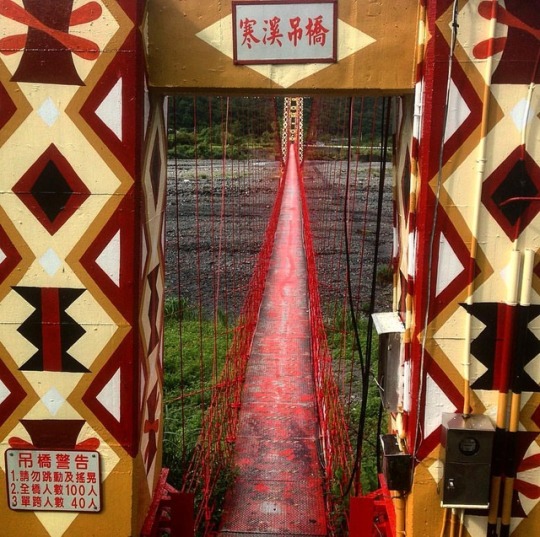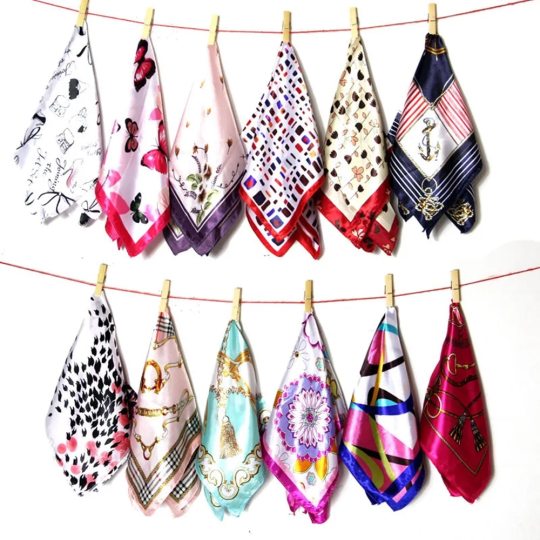#hanxi
Text

Normal well adjusted individuals coming together to hang out normally together // music ▶
#oc#dominik#hanxi#hanako#roxxy#original characters#illustration#original art#digital art#my art#drugs tw#CREDITS TO QUINN FOR THE CAPTION
232 notes
·
View notes
Photo

HanXi Silk Scarf Women Square ... Price 1.38$ CLICK TO BUY
0 notes
Text
La historia de las cuatro bellas de la historia china (parte II)... Wang Zhaojun (王昭君)
La historia de las cuatro bellas de la historia china (parte II)... Wang Zhaojun (王昭君)

La segunda bella de la historia china se trata de Wang Zhaojun (王昭君), también conocida como Wang Qiang (王嫱), en mi opinión, la única de las cuatro bellas que tuvo un final relativamente feliz.
Wang Zhaojun era una de las miles de esposas (sin exagerar) que tenía el emperador Yuan Di (元帝: 75a.c.- 33a.c.) de la dinastía Han, aunque era extremadamente hermosa, el emperador no se había enterado de ella. Puesto que era tantas las esposas del emperador, era imposible que él las conociera personalmente a cada una de ellas, por eso, habían pintores que dibujaban retratos de los rostros de las esposas, y los presentaba al emperador, y así el emperador escogía la "afortunada" que pasará la noche con él. Ya se imagina usted lo importante que era los retratos para las miles de esposas, pues una vez una mujer se convierta en esposa del emperador, jamás podrá salir del palacio imperial (excepto por órdenes del emperador), entonces si una esposa no consigue el cariño del emperador, pasará toda la vida en una soledad interminable. Por esa razón, las mujeres del emperador sobornaban a los pintores para que las dibujaran más bonitas y así, poder ser alguien en el gigantesco palacio imperial. Pero Wang Zhaojun era una mujer de virtudes, y nunca utilizó engaño o soborno con los pintores, y es por eso que el emperador no se había enterado de ella.
La vida de Wang Zhaojun tuvo un giro de 180 grados cuando el jefe de uno de los etnias lejanos Hu HanXie (呼韩邪) llegó al palacio imperial, con la intención de poder casarse con algunas mujeres nobles de la etnia Han (汉). Debido a la soledad y la depresión dentro del palacio, Wang Zhaojun solicitó ser una de ellas, y el emperador consintió obviamente. Y hasta el momento de partida de Hu Hanxie con las mujeres escogidas, el emperador vió el rostro a Wang Zhaojun, aunque se asombró por su gran belleza, ya no podía hacer nada para retenerla.
Wang Zhaojun llegó a la etnia lejana, tuvo un hijo con el jefe Hu Hanxie, parecía que iban a ser felices por un buen tiempo, pero Hu Hanxie se murió después de dos años y Wang Zhaojun tuvo que cumplir con las costumbres de la etnia: casarse con el hijo mayor del difunto jefe, dicen que éste la quiso mucho, y tuvieron dos hijas.
Wang Zhaojun es una de las cuatro bellas de China no sólo por su belleza, sino también por el valor político de su matrimonio con Hu Hanxie. Pues trajo muchos años de paz en la frontera del emperador con esa etnia, además junto con Wang Zhaojun llegó una buena parte de la cultura china a esa etnia acelerando el desarrollo cultural, social de la etnia.
0 notes
Link
FREE SHIPPING WORLDWIDE Buy Now 13% Discount On Hanxi In-Ear Earphone Stereo Bass Sound Earbuds Communication Wired In-Ear Sensitivity 108dB at Shop For Gamers.
0 notes
Photo

character stats — ng hanxi
2 notes
·
View notes
Text
Khắc phục chữa đau mắt hàn xì
Dùng nước ấm để rửa mắt
Hãy để mắt dưới vòi nước ấm để rửa mắt trong khoảng 15 phút giúp mắt sạch và giảm những tổn thương dễ xảy ra.
Hãy để cho mắt nghỉ ngơi
Cho d�� mắt bị đau do nguyên nhân nào thì cách tốt nhất đó là hãy để mắt được nghỉ ngơi tốt nhất. Không nên nhìn chằm chằm vào tivi hoặc máy tính bởi vì dễ có thể gây mỏi mắt và khiến mắt trở nên trầm trọng hơn. Hạn chế tối đa việc sử dụng các thiết bị điện tử.
Chườm túi nước đá lên mắt
Lấy một vài viên đá cho vào trong miếng vải sạch và đắp lên mắt, không đắp trực tiếp lên mắt bởi vì dễ gây tổn thương cho mắt. Chỉ đắp miếng vải xung quanh trong khoảng 1 phút và thực hiện trong ngày nhiều lần là được.
Đắp lá diếp cá lên mắt
Hãy rửa sạch lá diếp cá thật sạch và trần qua nước sôi, để cho ráo nước và giã nhuyễn lá diếp cá. Sau đó hãy bọc trong một miếng vải sạch và đắp lên mắt, thực hiện 10-15 phút với 3 lần/ngày.
Nguồn xem tại : https://thienbang.com/han-xi-bi-dau-mat-nguyen-nhan-va-cach-chua-tri-hieu-qua
Bảo hộ lao động Thiên Bằng - đơn vị chuyên cung cấp đồ bảo hộ lao động, đồ nghề thợ hàn xì uy tín.
0 notes
Photo

Project Title: 7AM DAISY PRODUCT&PACKAGING
Design: Hanxi Li
Location: Asia
Project Type: Brand identity & Packaging
Client: 7AM DAISY
Product Launch Location: China
Packaging Contents: Skincare
Packaging Substrate / Materials: Glass bottle, Paper
Printing Process: Flexography
Creative category: Graphic design
Project description:
Design logo, brand, and packaging for 7AM DAISY youthful and professional essences series in early 2020.
7AM DAISY is inspired by the magic of those fluids and Daisy flower that closes at night and opens during the day as a symbol of freshness and purity, and is designed to give you that healthy, dewy, naturally glowing “morning skin” throughout the day!
The product design used 5 colors to represent 5 different function: BLUE-REPLENISH, RED-RENEW, PINK-REVITALIZE, PURPLE-RESTORE, GREEN-RESCUE. The collision of color- block such as daisy blossom. The packaging design formed the differentiation between traditional skincare. A daisy logo mark half-seen on the packaging perfect matching brand concept. The colors of packaging speaks a strong visual impact, constant and coherent alteration generates beauty. More international visual language, more youthful attitudes of skincare.
The product already launch in Southeast Asian countries such as Singapore, Malaysia, Thailand. Awarded 4.9 score on makeup Internet platform such as SHOPEE. 7AM DAISY has been a new Internet celebrity on INSTAGRAM.
Unique design concept:
Attempting to re-examine the skincare industry's design style of using componential icons in a regular way to inject vitality into the skincare industry. The packaging captures the habits of professional skincare users, highlights the componential elements, and shapes the new generation of skincare brands through the reorganization of information levels and bright colors. On the other hand, bring the energy from makeup into skincare.
12 notes
·
View notes
Text
Cycling the Han River Trail
Cycling the Han River Trail
Hanxi Riverside Bike Path 20KM
The Hanxi Riverside Bike Path is a lightly trafficked stretch of exposed, wide open path which runs parallel to the Hanxi River which runs north and south along the eastern side of the city. Located directly south of the FengYuan District, the Hanxi River path essentially follows the foothills of the Daken scenic mountain area located further to the east.
Ride…
View On WordPress
0 notes
Photo

Hanxi bridge. 2nd shot. Puente Hanxi. 2º disparo. Taiwan. #lavueltaalmundosinprisas #aroundtheworldunhurried #lavueltaalmundo #aroundtheworld #bridge #puente #Hanxi #taiwan #friendsmeeting #reuniondeamigos #viaje #travel #trip #journey #viajero #traveler #volunteer #voluntario (at 宜蘭縣大同鄉寒溪村~寒溪吊橋)
#aroundtheworld#trip#lavueltaalmundo#taiwan#bridge#viaje#puente#aroundtheworldunhurried#traveler#friendsmeeting#lavueltaalmundosinprisas#viajero#hanxi#voluntario#journey#travel#reuniondeamigos#volunteer
0 notes
Photo

Factory Directly Sale Private Label Dry Baby Wipes, Baby Wipes Wholesale
contact us
Alice Lee
Phone: +8613533964540
Email: [email protected]
QQ: 33591376
WhatsApp: +8613533964540
Address: Room 330, Aoyuan building, NO.283 the west of Hanxi Road, Panyu District, Guangzhou, 511400, China.
#Oximeter#Baby Pampers#Best Sanitary Pads#Overnight Diapers#Medicine Pouches#Cheap Towel#Medical Ice Bag#Zinc Oxide Tape#Blood Presure Machine Price#Plastic Syringe#Best Glucose Meter
0 notes
Video
youtube
The Hanxi flower border in Chenshan Botanical Garden is one of the most classic flower borders in China, which can directly compare with foreign flower borders. Garden Garden Design Gardening I love DaZi (2)
https://maxwellprebish.blogspot.com/
0 notes
Photo

my ocs
404 notes
·
View notes
Photo

HanXi Silk Scarf Women Square ... Price 1.38$ CLICK TO BUY
0 notes
Text
I went to see the procession for the Hanxi Mazu as it passed through Changhua on its way back from southern Taiwan--it passed through a week ago on its way down, but that was right after I landed and I was too tired even though it was highly recommended by virtually all of my coworkers. My roommate and I ended up going tonight, and WOOOOOOW...
I knew they don’t fuck around with fireworks around here, but somehow I wasn’t expecting to be within three meters of a twenty-minute long fireworks display. My ears are still ringing.
I got the whole thing on my phone, and if I remember I’ll upload it to YouTube on the school’s wifi tomorrow--it is truly something.
My ears are still ringing, LOOOOOOL
24 notes
·
View notes
Text
Oh, hey! Didn't the actress who plays Gong Jun's mother in The Flaming Heart already played his mother in Begin Again? 😲 Her name is Zhang Hanxi but she's not listed on MDL for TFH.
0 notes
Text
Home Cookin’
If the headlines are to be believed, the global “Trade War” has been incrementally ramping up. In an apparent tit-for-tat, India recently announced tariffs on American engines and some agricultural products. Every week more tariffs are announced, and it doesn’t seem to be abating any time soon. This is a reversal of nearly a century of the doctrine of “free trade,” which has managed to infect every nation and economy on the planet--the same which has, we are so often told, “lifted billions out of poverty.” Why would the world’s largest economies divert themselves from the most prosperous system in human history? The common knowledge until now has been that tariffs, and trade protectionism in general, are poisonous to economic growth and anathema not only to human liberty, but the development of a society in which to inculcate human happiness.
With so much of the world in economic turmoil, what could justify endangering it further?

One of the great innovations of 20th century Capitalism is its international character. It was the result of two world wars and the economic circumstances that produced them. The chief concern of the Imperial system was to provide the industrialized capital countries, such as Britain or France, with raw materials, manpower, and markets. Colonies would be restricted to trading with their overlords, providing them with the raw materials necessary to fuel their expanding industry, and in turn buying the finished products made there. In effect, what you see is several parallel economies, wherein the activity of much of the world’s trade activity is restricted to within the empire.
We see this come to a head with the advent of the first World War. By the 20th century, practically everything colonizable has been so. There is no longer anywhere left to expand, as the sprawling empires of Russia, Britain, and France have more or less reached their maximum geographical limits. The US had divested Spain of her remaining colonies earlier in the century, and Germany, a late-entry as well, managed to grab some of Africa, and a few islands in the Pacific, but at this point the Imperial powers, which had enjoyed a period of relative European peace since the Crimean war, are shoulder to shoulder. This is a serious problem. The first World War shows us why.
At the outbreak of war, Britain had a population of about 45 million, and Germany 69 million. This difference of 24 million offers significant advantages. Placing these two countries in a vacuum, let’s assume half that number is men of military age, and that confers on Germany a powerful numerical advantage. Germany is larger than Britain geographically as well, and rich with deposits of iron and coal. We see towards the end of the war in our world that the elimination of Britain’s manpower, despite the liberalization of women’s employment, resulted in economic repercussions, such as a severe drop in agricultural productivity in 1917--a major threat as German U-boats take their toll on British imports. All else being equal, we’d see Britain’s organs shut down as it bled itself white, while Germany’s industry remains relatively healthy. Without the benefits conferred by her colonies, Britain would have been defeated eventually, even if just by attrition alone.
However, Britain, France, and Russia all did have vast overseas empires and the tremendous manpower provided by the subject/constituent nations. India’s population alone is nearly a full five times that of Germany. Britain and France rely increasingly heavily on their colonial populations as their native manpower is wasted on the fields of France or the frontiers of Poland.
With colonial expansion at its geographic limits, the longer the status quo continues, the large empires will only grow more powerful, more numerous, more wealthy, while those without vast empires to exploit are gradually left further behind. Even if Germany for instance was able to mitigate this difference in productive power with technological development, as its techniques become adopted by her neighbors that gap will only accelerate faster. Her chief rival, Britain, would outpace Germany, who is effectively shut out of trade with a quarter of the world, and it would ever after be at Great Britain’s mercy with her international trade more or less at the mercy of the British navy.
This is the vulgar logic of Imperialism. You grow, or you die. Two world wars and over a hundred-million dead will come out of this, to say nothing of the foundation of corpses that Imperialism built for itself over the centuries.
Ever adaptable, capitalism found a way to evade--for a time--this trap. Free trade, in theory, does away with exclusive economic zones. Corporate concerns can expand not only vertically, but horizontally, internationally. China and India’s sprawling reserve armies of labor aren’t treated as threats per se, because now Britain or Germany or Japan can rent them. They can recoup some of the money flowing out of Great Britain in the form of wages and economic investment by bringing in money through sales of their goods. China in turn can do the same, taking advantage of the West’s educational system, selling the fruits of their domestic industry, and even purchase Western corporations, such as the agricultural giant Smithfield. It doesn’t matter that the materials Britain needs for her cell phones are in the Congo, or that the laborers that make them are in Hanxi. As long as the money flows, it doesn’t matter in the least bit what the nationality of the owners are.
However, much like the Imperial stage that preceded it, this Free Trade Capitalism has its limits too, imprisoned by its own internal logic. Money does not grow on trees, we are told, so then where does it come from? Generally speaking, it’s propagated either in the form of wages, or the form of loans. They’re rare, but some wage labor does indeed provide a surplus that allow the worker to live in relative abundance and comfort. This is the exception, while the rule is for the employer to reduce wages as low as possible, and simultaneously raise rates/rent/prices as high as possible. High wages means less profits for the owners, and low prices mean that workers are left with money to spend on other, competing products. This manifested itself rather hideously in the “company town,” where all is owned by the company, run by the company, and controlled by the company. Employees weren’t paid in cash, but in company scrip that could only be used within the company town itself. The effects of this sort of wealth extraction can be witnessed in the US even today. Outside of major cities, the former small, agricultural towns, commuter communities, and even some suburbs lie in abject devastation. Despite ostensibly producing abundance, swathes of the country are devastated by poverty.
The internationalization of capital mitigated this somewhat. After a certain point, the majority of the liquid wealth in a country is collected at the top. Accumulation is the central mechanism which drives the capitalist machine. When there is no longer anything left to accumulate, it begins to very quickly break down. It can only expand beyond its native borders, or eventually perish. This can be likened somewhat to Perry’s so-called Opening of Japan. Japan didn’t need the United States, or European trade. It got along fine with a more or less self-contained economy for nearly three centuries. Wealth was measured in rice production rather than silver accumulation. Were a modern nation to try that, it too would find itself forced open. That accumulated wealth would still exist, and a larger power or corporation of powers would want it. If it came to a military conflict, just as we see in both World Wars, the side with access to the resources of the entire globe will almost inevitably win. In the First, Britain invented and built hundreds of tanks. Germany produced only 12, and it had to scrounge every last scrap of steel in the country to do it.
In part, this fact is what drove the disintegration of Imperialism and the gradual incorporation of virtually every nation on earth into a global economy. Participation is essential, or else it leads to subjugation in one form or another, and even then compliance doesn’t ensure independence. The same rules of accumulation apply, however. Liquid wealth is accumulated and removed from one country, Bangladesh for example, where wages for their garment industry are obscenely low, while profits are maximized by selling the shirts made for pennies at tens, hundreds, or even thousands of dollars. The West might facilitate integration through the form of loans, but this too is only a yoke around the neck of smaller, “developing” nations who are eventually faced with the impossibility of ever paying off the loans meant to modernize and expand their economy. Their domestic, national bourgeoisie (or aristocracy) sucks the country dry in the hope of joining the ranks of the international bourgeoisie, who are only too happy to let them buy their way into the club.
Eventually, this too has to end. All that can be got is had, because the market is saturated, or there are no longer any markets of comparable size to profitably expand into, and so on. This is a problem affecting the world today. China’s rapid development from the 80s to today was the beating heart of the global economy. Now though it’s developed, it’s built. It no longer needs to pay out to foreign capital its debt, as it has its own domestic companies to do whatever work they need. The consequence is that the world economy grew to accommodate this major, expanding market, which now no longer exists as it did. Worse still, there is no economy of comparable size for it to expand into. With the disappearance of these former trade relations, the tremendous profits that they produced have likewise vanished. Without a revenue stream to replace it, the edifice constructed to direct that flow of capital has to be hollowed out, cannibalized in order to keep profits up and coming.
This too reaches an ultimate point, as even this source of capital becomes exhausted. With no external source of revenue, and its internal reserves consumed, the only answer is the elimination of competition to create a space in which to expand.
Despite all the saber rattling, I don’t believe that China, Russia, the US, et al, is ready to come to blows just yet. The increase in tariffs serves to cut out foreign trade, but to what purpose? Tariffs exist solely to serve a domestic economy. On the surface, this makes no economic sense as the domestic has been subordinated to the international.
There are though still some industries which cannot expand beyond the national for one reason or another. Take France’s wine and bourbon industries for example (I don’t know if this is actually the case, but assuming for illustrative purposes that it is so). True bourbon, champagne, and so on are expensive commodities which to be called such can only be produced in those regions of France. This produces fundamental problems of profitability and competitiveness. Jack Daniels isn’t restricted to these specific regions. It can gather its materials from anywhere in the world and more or less sell them the same. I doubt French champagne or bourbon will be going out of style any time soon, but only so much can be produced in a single year. Even taking technical and scientific advances which aid and multiply production into account, theoretically, these domestic French producers are severely limited by geography and subsequently can accrue only so much profit in a year. Imagining that tariffs on liquor were to spread between the EU and the US. European industry, and France in particular, is shielded from competition with foreign producers. This creates a limit to expansion which the larger corporations have already reached, but which will eventually crowd out smaller firms as a “natural” function of capitalism. Big Bourbon is able to then expand with the minimum of expenditures as smaller competitors conglomerate or succumb to the market, snapping up in bankruptcy for a song what would have cost millions or billions to buy before.
If this is indeed the case, then what we could be witnessing are the preliminary stages to an international showdown between these major spheres of market interests: the US, the EU, Russia, and China. With nowhere left to expand, capital closes ranks and consolidates at home while trying to disrupt, out maneuver, or destroy its competitors abroad. States are their medium of interaction, but this state of affairs doesn’t necessarily entail a nationalist element. The national identities and enmities that helped fuel the World Wars have been seriously eroded, thanks in no small part to the proliferation of international capital. Thus, while it might be the Chinese flag facing off with an American one in the South China Sea, this isn’t a result of the political will of either the Chinese or the Americans, but is rather driven by the corporations and bourgeois whose interests now dominate the economic fortunes of these and every other country with which they trade.
This year, the stock market has seen more or less net-zero growth, while profits continue to set records quarter after quarter, year after year, at least in the US. If the constantly increasing fodder capital needs to survive no longer expands, then it must ghoulishly devour its own children until only itself remains, and then it turns its ravenous eyes on the other emaciated cannibals, who themselves stare back with the same vicious hunger. It’s possible that these tariffs represent the hors d'oeuvres, the last scraps of feast before the impending famine.
#politics#economics#capitalism#communism#socialism#United States#Russia#China#European Union#France#tariffs#World War 1#World War 2#World War 3#Imperialism#working class#proletariat#bourgeois#bourgeoisie
1 note
·
View note